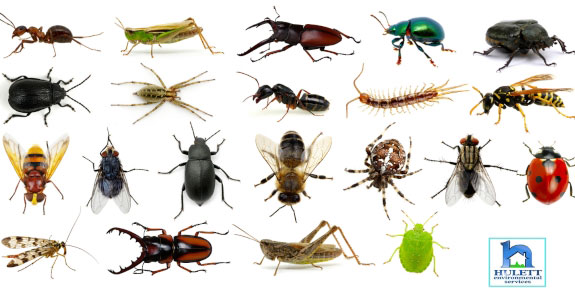
20 Interesting Insect Facts
The Insecta class includes ants, bees, flies, beetles and much more, all of which have 3 segments- head, thorax and abdomen- encased in a hard exoskeleton. They also have a pair of antenna, compound eyes, and three pairs of joint legs. Here are 20 interesting facts about insects provided by Live Science
- Insects are the most successful creates
There are 1.5 million species of organisms on this planet, of which insects make up about 2/3. They are small, which makes it easier for them to high and reducing overall energy requirements. They also had a extraordinary ability to reproduce.
- Beetles are the most biodiverse group of creatures
They make up 40% of the insect species.
- There are 10 quadrillion ants on the planet at any given moment
There are 1.4 million ants per human (based on the world population of 7.3 billion people).
- Insects are on every continent
However, on Antarctica they barely have a foothold.
- Insects are landlubbers
Your only escape from the six-legged creatures is by being on the ocean.
- Insects breathe through their sides
Insects inhale oxygen and exhale carbon dioxide through holes called spiracles in their exoskeleton.
- Insects have an open circulatory system
Insect blood, also known as hemolymph is typically clear, but can be greenish or yellowish.
- Insects were along the first animals, dating back to 400 million years
These ancient critters were around 170 million years before dinosaurs.
- The largest insect ever known was the ancient dragonfly
The dragonfly had a wingspan of 2.5 feet (290 million to 250 million years ago).
- Today’s heftiest insect is found in New Zealand
Known as the giant weta, a cricket like beast that can weight more than 1 pound.
- Insects have compound eyes
Contrary to popular belief that the individual units within the eye act as its own eye, the individual units act more like pixels, building up a mosaic of imagery.
- A number of insects have a bonus eye
Many insects have a so-called simple eye, or ocelli, in between, in the middle of their “forehead.”
- The Hybomitra hinei weighti house fly can fly up to 90 mph
Jerry Butler, now an emeritus professor of entomology at the University of Florida, once shot a pellet out of an air rifle to see if a male horsefly of the species Hybomitra hinei wrighti could catch it. The guy-fly did, suggesting it must have flown at about 90 mph, the record for insects, as reported by Discover Magazine.
- Most insects only live for a few days or weeks as reproducing adults
The egg laying queens of colonies are however exceptions and can life for decades.
- Termite queens can product 6,000-7,000 eggs in a single day
According to the USDA an entomologist once recorded a queen of the termite species Macrotermes hellicosus, found in Africa and Southeast Asia, cranking out an egg at a rate of one every 2 seconds, which would add up to 43,000 a day, assuming she never took a break.
- The meadow froghopper insect can jump more than 100 times its height (about 28 inches)
Humans cannot jump more than their own height, the highest vertical record jump is 46 inches.
- A dung beetle can pull 1,141 times its own body weight
Scientists reported in 2010 (in the Proceedings of the Royal Society B) that the strongest insect on the planet is Onthophagus taurus, known variously as a horned dung beetle, bull-headed dung beetle and taurus scarab.
- The male Indian stick insect, Necroscia sparaxes, has the highest record of latching onto its female mate for 79 days
Male insects latch on to their female mates in order to prevent competitors from also inseminating the female (usually only up to a few days).
- Insects have ears all over the place
A few examples include: Lacewings (have ears on the base of their wings), Crickets (have ears on their legs), Grasshopper’s’ (ears are on their abdomen), and Tachinids-parasitic type of fly (have ears on their necks).
- All bugs are insects, but not all insets are bugs
Not every insect is a bug. Strictly speaking, “bugs” are an order of insects called Hemiptera. These “true bugs,” as entomologists also call them, are distinguished for having hypodermic-needle-like mouthparts.




